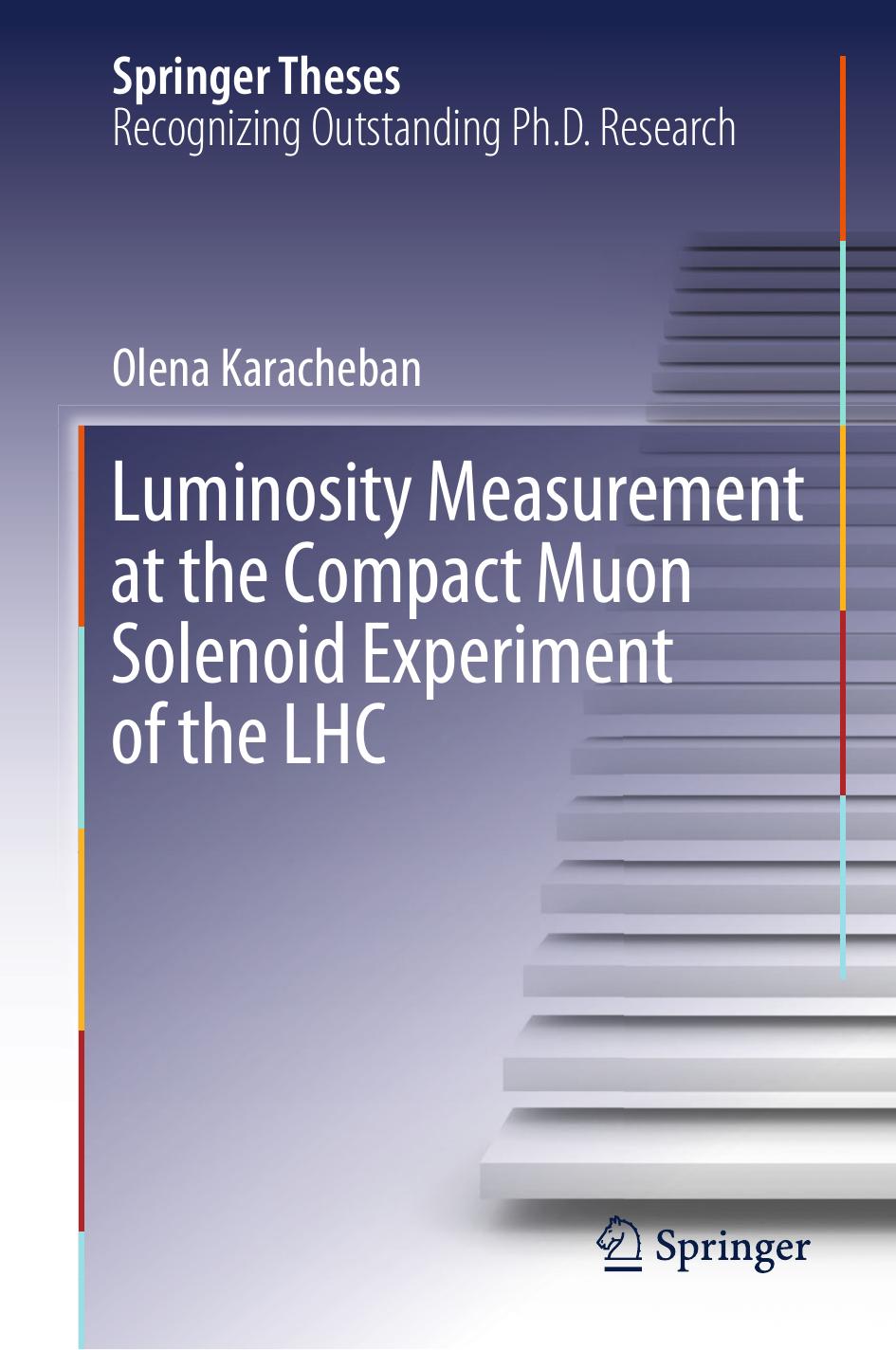Luminosity Measurement at the Compact Muon Solenoid Experiment of the LHC by Olena Karacheban

Author:Olena Karacheban
Language: eng
Format: epub, pdf
Publisher: Springer International Publishing, Cham
5. Measurements of the Luminosity Using BCM1F
Olena Karacheban1
(1)EP-CMX-DA, CERN, Geneva, Switzerland
Olena Karacheban
Email: [email protected]
5.1 BCM1F Rate Measurements Using the Real-Time Histogramming Unit
RHU modules, described in Sect. 4.5.2, are used for online BCM1F rate measurements. Although it is expected that each channel measures almost the same hit rate, in practice the rates differ significantly. This is due to conditions like larger noise in a few channels requiring a higher discriminator threshold, differences in the sensor efficiency due to progressive radiation damage or a reduced bias voltage. In the future these inefficiencies will be corrected for, but at the moment they are accounted for by normalizing the rates to an average of all channels.
Channels that have consistently low performance, e.g. low efficiency or erratic signals, are omitted from the luminosity measurement via a permanent channel mask. However, during Run II it was observed that a number of channels jumped occasionally to high count rates for a short time. To account for this, an automatic channel-masking algorithm was developed to mask these channels temporarily [1]. The rates in the central 50% of the channels are taken as a reference. The mean values and standard deviations of the normalized rates in these channels are calculated. Channels whose rate falls outside of 6 sigma from the mean are excluded from the luminosity calculation for the corresponding four lumi-nibbles. In addition, the list of permanently- and temporarily-masked channels is sent along with the luminosity values for offline storage.
The software used to read the data out of the RHU is implemented in the CMS online data-taking software framework XDAQ [2, 3]. The system is modular, so that the data is passed from element to element through an eventing bus. The module that interfaces with the RHU hardware is called the source. The source collects the RHU histograms and passes them over the eventing bus to the processor, the module that uses the zero-counting algorithm to calculate the luminosity as well as background values, along with monitoring information and aggregated channel rate histograms for offline analysis, as is shown in Fig. 5.1. It will be described in more detail in Sects. 5.1.1 and 5.1.2. The calculated values are then passed from the processor over the eventing bus to the upstream data collector, which publishes the values online and stores them for offline use. RHU count rate during the van der Meer scan are used to calibrate BCM1F as a luminometer.
Fig. 5.1The BCM1F processor logic. Left: online luminosity, 6.25 ns bin width (third bin of RHU data). Right: aggregated channel rate histograms, 25 ns bin width (sum of 4 RHU bins)
Download
Luminosity Measurement at the Compact Muon Solenoid Experiment of the LHC by Olena Karacheban.pdf
This site does not store any files on its server. We only index and link to content provided by other sites. Please contact the content providers to delete copyright contents if any and email us, we'll remove relevant links or contents immediately.
| Automotive | Engineering |
| Transportation |
Whiskies Galore by Ian Buxton(41867)
Introduction to Aircraft Design (Cambridge Aerospace Series) by John P. Fielding(33064)
Small Unmanned Fixed-wing Aircraft Design by Andrew J. Keane Andras Sobester James P. Scanlan & András Sóbester & James P. Scanlan(32743)
Craft Beer for the Homebrewer by Michael Agnew(18140)
Turbulence by E. J. Noyes(7935)
The Complete Stick Figure Physics Tutorials by Allen Sarah(7307)
Kaplan MCAT General Chemistry Review by Kaplan(6866)
The Thirst by Nesbo Jo(6826)
Bad Blood by John Carreyrou(6543)
Modelling of Convective Heat and Mass Transfer in Rotating Flows by Igor V. Shevchuk(6391)
Learning SQL by Alan Beaulieu(6208)
Weapons of Math Destruction by Cathy O'Neil(6139)
Man-made Catastrophes and Risk Information Concealment by Dmitry Chernov & Didier Sornette(5921)
Digital Minimalism by Cal Newport;(5661)
Life 3.0: Being Human in the Age of Artificial Intelligence by Tegmark Max(5474)
iGen by Jean M. Twenge(5366)
Secrets of Antigravity Propulsion: Tesla, UFOs, and Classified Aerospace Technology by Ph.D. Paul A. Laviolette(5309)
Design of Trajectory Optimization Approach for Space Maneuver Vehicle Skip Entry Problems by Runqi Chai & Al Savvaris & Antonios Tsourdos & Senchun Chai(5011)
Electronic Devices & Circuits by Jacob Millman & Christos C. Halkias(4907)
